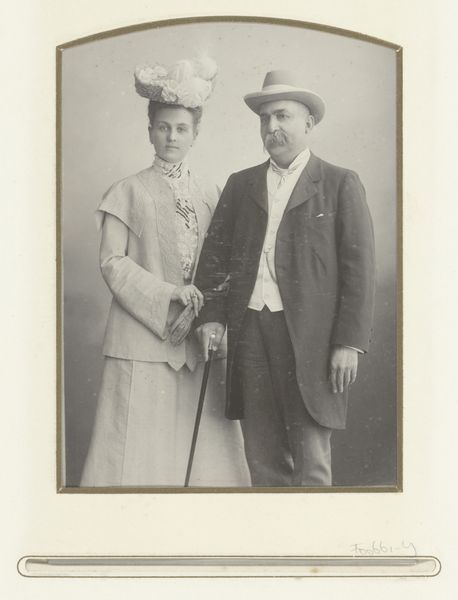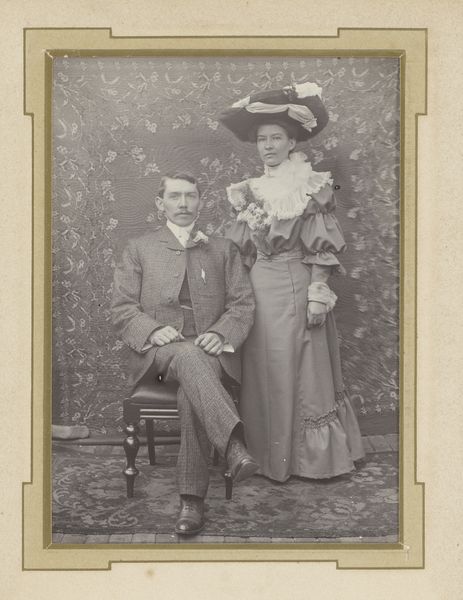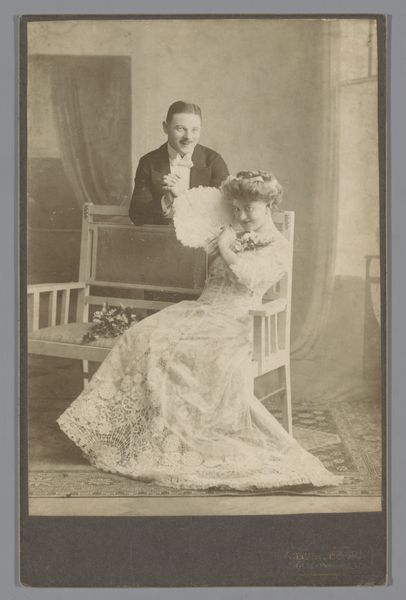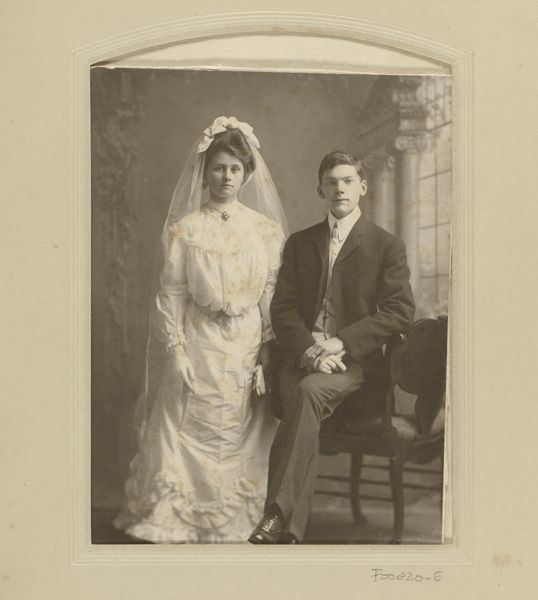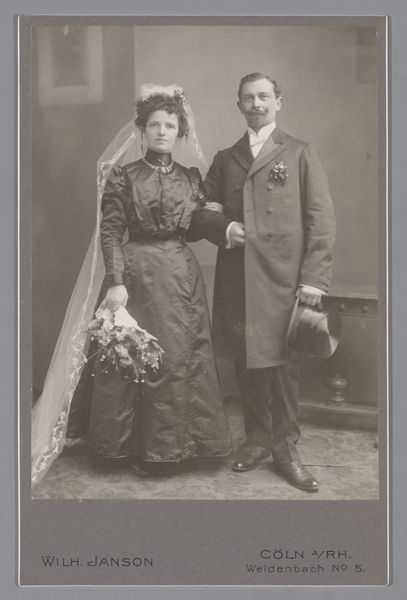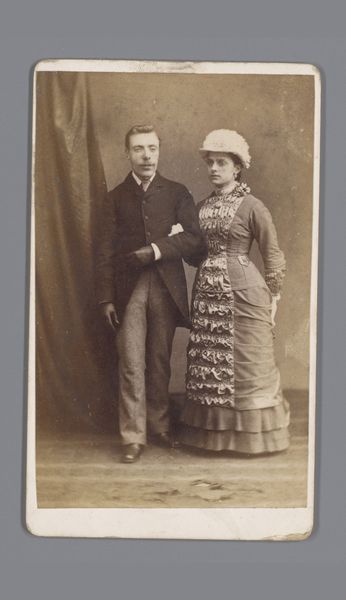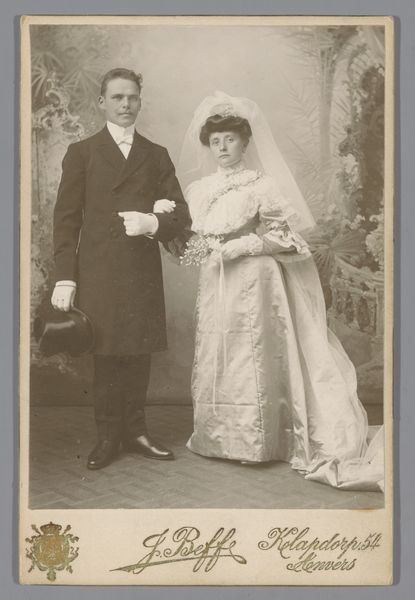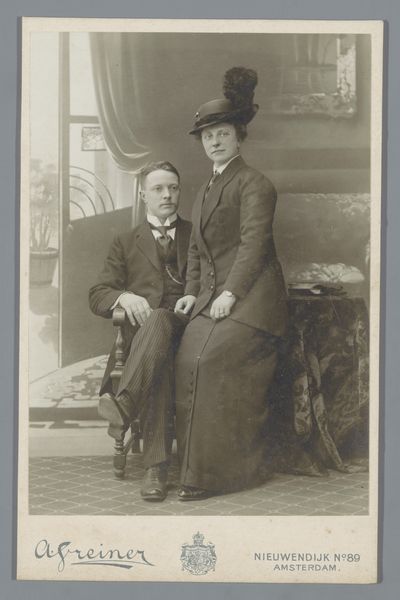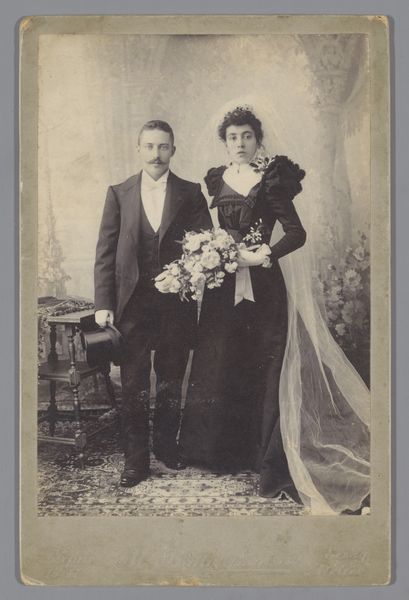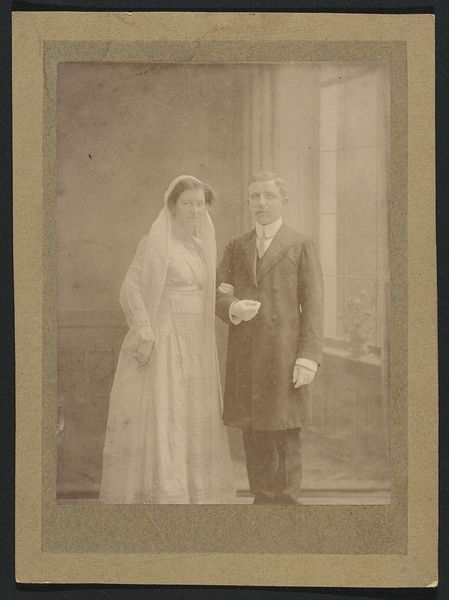
photography, gelatin-silver-print
#
portrait
#
photography
#
historical photography
#
gelatin-silver-print
Dimensions: height 164 mm, width 107 mm
Copyright: Rijks Museum: Open Domain
Curator: Here we have a gelatin-silver print titled "Portret van een echtpaar," or "Portrait of a Couple," created sometime between 1892 and 1910 by Atelier Herz. Editor: The image evokes a powerful sense of formality and distance. There's a stiffness to their pose that speaks volumes, and it makes me question their societal position at that moment in history. Curator: I find the formal composition particularly striking. Notice the careful arrangement of the figures in relation to each other and the backdrop, a painted landscape suggestive of a garden. It creates a delicate interplay of planes, lending depth to the image, doesn't it? The monochromatic palette only enhances this sensation of layering. Editor: Precisely, the background looks nothing like Amsterdam. The stiffness of their gestures combined with that landscape create an impression of social aspirations—it appears almost as though the couple wanted to represent themselves as part of a burgeoning, respectable middle-class. The woman's grip on the man’s arm seems both a display of affection but also control, don’t you think? Curator: Interesting. I would agree it is more about visual balance. The dark suit worn by the gentleman complements the cascading frills of the woman's gown. This provides a counterweight, establishing symmetry across the vertical axis. Editor: I see your point. And yet, consider the implied gender dynamics: the gentleman standing upright and forward facing; his partner slightly turned and clinging. To me, the photograph speaks about turn of the century gender and class relations. Curator: Ultimately, the piece presents a harmonious depiction, despite your point about power relations. And this is achieved using balanced distribution of light, with the highlight on the couple’s faces. It presents a study in visual organization. Editor: I believe we see captured social dynamics but interpreted in form. But what that form makes clear is that identity can be fluid when shaped by context, desire, and visual techniques. Curator: Perhaps what is intriguing about historical photography is its openness to allow interpretations from both. Editor: An openness, maybe, that forces us to contend with our current assumptions.
Comments
No comments
Be the first to comment and join the conversation on the ultimate creative platform.
